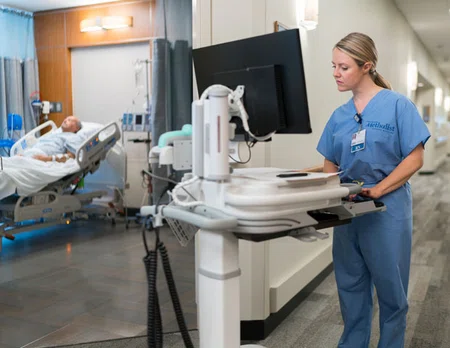© 2024. Houston Methodist, Houston, TX. All rights reserved.


In this
issue

WELCOME
NURSING SCIENCE

Elevator Pitch

Interventions to Improve Communication at Hospital Discharge and Rates of Readmission: A Systematic Review and Meta-Analysis
EDUCATION

Utilizing Technological Devices in Nursing Communication: Best Practices and Pitfalls

Intentional Conversations: Best Practice Strategies
PRACTICE

Engaging with Patients in Their Care Plan While Using the Narration of Care Principles

Innovations in Hand-off Report Communications
PROFESSIONAL DEVELOPMENT
MAGNET
FROM OUR TEAMS

ABOUT DISCOVERN
FROM OUR TEAMS
The Importance of Communication for UAAs
By Shelley McKenzie, MBA, BSN, BS, RN
By Shelley McKenzie, MBA, BSN, BS, RN

Several processes in today’s healthcare system involve patient handoffs among multiple healthcare professionals with varying educational and occupational training levels. Team collaboration is essential during these handoffs. When healthcare professionals are not communicating effectively, patient safety is at risk for several reasons, including:
- Missing critical information
- Misinterpretation of information
- Unclear orders
- Overlooked changes in status
Lack of communication creates situations where medical errors can occur. These errors have the potential to cause severe injury or unexpected patient death. During a three-day hospital stay, a patient may interact with 15 or more employees, including physicians, nurses, technicians, patient care assistants (PCAs), unit administrative assistants (UAAs) and others. UAAs are one of the first faces that these patients meet and interact with.
A unit administrative assistant (UAA) must have excellent written and verbal communication skills. They should be able to clearly and effectively communicate with patients, their families, medical professionals, and other staff members. This requires strong interpersonal skills and adapting their communication style to suit the audience.
The diverse range of responsibilities the UAAs must manage include:
Earlier this year, the Shared iPhone Vocera Edge and Rover replaced Zebra phones. Nurses are now equipped with a smartphone solution that incorporates various communication methods in a single device, including calling and texting via Epic Secure Chat, alerts and mobile application functions. The UAA on each unit plays a vital role in ensuring nurses are equipped with these iPhones before the start of each shift. They are responsible for distributing and collecting the iPhones and accessories at the beginning and end of each shift.
- Greet patients and visitors and direct them to appropriate areas
- Answer phone calls and provide assistance and information as needed
- Facilitate interdepartmental communication and collaboration
UAA job responsibilities include administrative duties such as maintaining accurate medical records, updating patient charts, and ensuring that day-to-day operations run smoothly in the department. They coordinate communication between medical staff, patients and families. The UAA’s role in the department is vital in keeping patients safe and ensuring no communication breakdowns between patients and staff.









